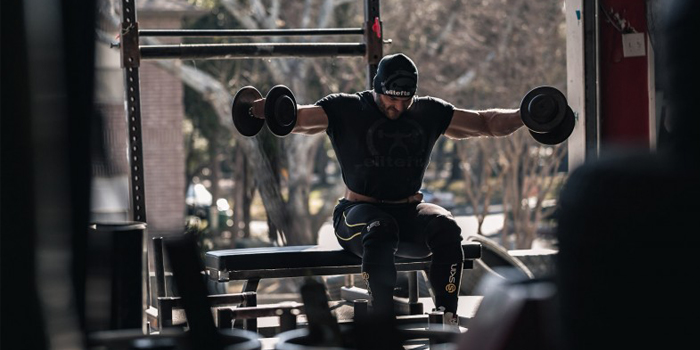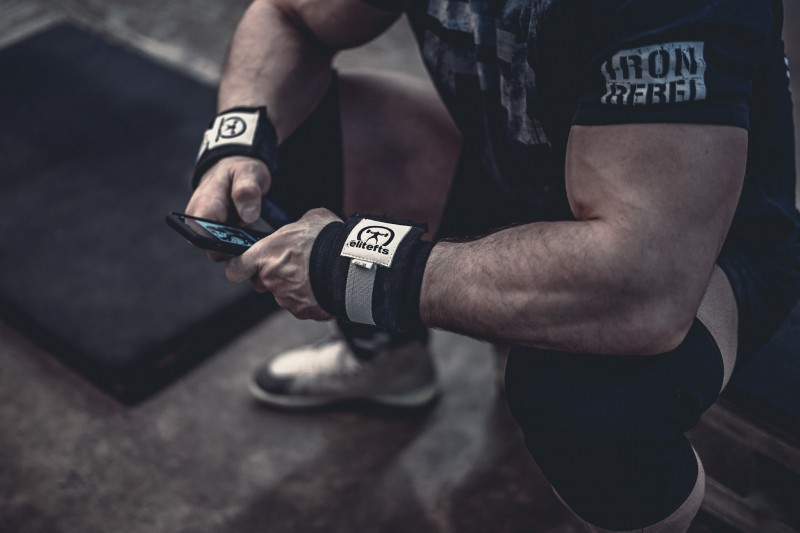
Bodybuilding and powerlifting are complimentary. You're selling yourself short if you’re not studying and learning from both disciplines.
Now, in the case of extra workouts, we’re not really sharing between disciplines — we’re combining them. That’s because extra workouts are already used, and used frequently, by many of the best bodybuilders and powerlifters in the world. If nothing else, that should tell you that they work, and you probably need to consider incorporating them into your training program.
The Basics
First, let’s make it clear what exactly extra workouts are and aren’t. They are:
- Short, 10-30 minute sessions performed in between your regular training days.
- High in volume, low in intensity, and targeted at lagging muscle groups.
- Designed to increase workload and capacity, restore blood flow or mobility to tight, sore muscles, and improve recovery.
They aren’t full-on training sessions that you tack on to your regular program as an excuse to justify overtraining!
As I mentioned above, extra workouts have been touted by both bodybuilders and powerlifters for a long time. Louie Simmons writes about them extensively in his explanation of the Westside system, for example. Rich Piana called his extra workouts “feeder workouts,” but they’re basically the same thing.
I think most lifters have the “more is more” mentality, and if you’re in that group, I probably don’t have to convince you why extra workouts are beneficial. But if you’re not, you might be skeptical, and I understand that. The key to understanding extra workouts is to remember the last bullet point above: they’re designed to improve recovery, not hamper it. If you’re not feeling more fresh, energized, and maybe pumped up after an extra workout, you overdid it.
READ MORE: Getting the Most Out of Your Extra Workouts: Rules to Follow and Types of Extra Workouts
How to Program Your Extra Workouts
As you can probably guess, the secret to not overdoing it, and to get the most out of your extra workouts, is to plan carefully in advance. Here’s how:
Choose What to Target: The SWOT Method
SWOT stands for Strengths, Weaknesses, Opportunities, and Threats, and it’s a great method for deciding both goals and how to reach them. I always like to start with weaknesses: what are you bad at? Usually, that’s your lowest-hanging fruit: you can improve on your weaknesses simply by training them more, instead of ignoring them, and extra workouts are perfect for accomplishing that. Louie Simmons gives the example of a lifter with a lagging bench press who performed three sets of 100 reps of light tricep extensions throughout the course of a week, and after several months, had improved his bench by 60 pounds.
The benefits of training your weaknesses are usually pretty obvious, but it can also be helpful to analyze your strengths as well. Sometimes we overlook these because we take them for granted. If you’re naturally gifted with huge biceps, why go to extra effort to make them bigger? But in reality, our strengths are often our greatest opportunities as well: for example, maybe by growing your already-impressive biceps, you make them into something truly remarkable, a cornerstone of your physique. Doesn’t sound reasonable? Go ahead and look at some old pictures of Arnold. Yes, he’d be a great bodybuilder without such impressive chest and arms… but the greatest of all time? Unlikely.
And, finally, there are the threats. These are the areas to work on that we oftentimes like to ignore, because we don’t want to think of the ramifications of them coming true. Let’s say you’ve got a recurring low-back injury that happens to be feeling really darn good right now. It’s very tempting to start piling on the weights and pretend the injury never happened in the first place — which is a great way to reaggravate the underlying problem. Instead, honestly assess what might go wrong with your training, and think about how you can help to prevent those threats from becoming reality.
Choose What Movements to Use
Here’s where another acronym can be useful: KISS. You want to rely mainly on simple, low-stress movements for the majority of your extra workouts. Of course, there are times when it might be beneficial to do some light squats on an off day, but in my experience, those times are relatively few and far between. In contrast, the drawbacks of choosing heavy, compound or complex movements increases the likelihood of pushing too hard and eating away at your recovery.
YouTube
There’s one major exception, and that involves rehab and prehab work. When you’re addressing threats, it can be very useful to intentionally put your body into compromised positions (again, with very light loads!) by using more complicated tools like the Bamboo Bar, specialty machines, and the like.
Structuring an Extra Workout
There are two major ways to structure an extra workout:
- You can set a time limit (typically 10-20 minutes) and perform as much work as possible during that time for a given movement or set of movements.
- You can set a rep goal. This should be a high number (50 or 100 is good), but you don’t necessarily need to perform all of those reps in just one set.
The key is that your session should not be weight-oriented. If you’re concerned about how much weight you’re using, you’re likely to push too hard or too long. Remember, we’re not trying to get stronger at the extra workouts — we’re trying to improve on our overarching goals. That means that progress is measured indirectly. So instead of asking yourself whether you added reps to your set of banded curls, instead ask whether your arms grew this past month. And instead of trying to add weight to your sled drags, look at whether your squat is increasing.
Finally, remember that extra workouts are extra. If you’ve got one planned, but are feeling especially worn down or beat up, don’t be afraid to skip it entirely.
Extra Workouts Examples
Strength-Focus
Help alleviate lower-body soreness by dragging a sled using a moderate load, taking long, slow steps, accentuating contraction of the muscles (hamstrings, glutes, calves when going forward, quads and calves when going backwards). Go 20 strides in one direction, rest 30 seconds, and then go 20 strides in the other. Repeat for 20 total minutes (about 6-8 trips).
Strengthen lagging upper back muscles that don’t get enough attention during your regular sessions by performing the following movements as a giant set:
- Banded Low Row. Hook a pair of bands around a post of a power rack, fairly low to the ground. Keeping your back flat and chest up, perform 10 reps with each arm (one band per arm), alternating arms.
- Rear-Delt Row. This is a staple of mine, and I want you to use “double reps” — perform one rear delt row, then one full seated row. Repeat for 10 total double reps.
- “Kirks.” This is a special exercise used frequently by legendary powerlifter Kirk Karwoski. Load a barbell with a light weight and take a thumbless, overhand grip. Perform a power shrug (like a power clean, but using only the traps, not the lower body) and hold at the top for a one-count. Then slowly lower to the starting position while keeping the scapula retracted. Do 10 reps.
Repeat that circuit for 5 total iterations or 30 minutes, whichever comes first.
Size-Focus
- Bring up lagging arms by performing a “feeder workout” about 8-12 hours after training arms. For these workouts, take a light resistance band, and use it to perform 3 sets of 100 reps of either partial pushdowns (lockout to half-stretch) or curls (full extension to half-curl), depending on which muscle group you last training. For example, if your main workout consisted of back and biceps in the morning, you’d do 3x100 partial curls later that night. If you trained both biceps and triceps that day, then do 4 total sets, 2x100 of each movement.
- If you want bigger shoulders, keep a pair of light dumbbells (we’re talking 5-10 pounds) in your bedroom. Every night, immediately after your last meal, perform one set of max reps of side raises, followed by one set of max reps of front raises, followed by one set of max reps of bent-forward raises. This is much harder than it sounds.
Conclusion
Hopefully, I’ve given you a little inspiration to kick your training up a notch. However, no matter how great extra workouts might seem, or how psyched up you are to go after your goals, remember to Think Strong. In this context, that means planning out how the extra sessions will fit into your overall training plan. That’s something that only you (or your coach) can determine, but it’s probably the single most important thing to consider if you want to be successful in the long run.
And finally, don’t feel constrained by the ideas I’ve laid out here. If you’ve got other methods of improving recovery that work for you — like mobility work, light cardiovascular work, or hell, playing with your dog — then don’t change what’s broken.
At the end of the day, there’s really only two requirements for success: you gotta Think Strong and Train Hard!
Originally published in January of 2019
Ben Pollack is a professional physical culturist. In 2017, he won first place at Reebok Record Breakers and became the strongest powerlifter in history in the 198-pound class with a 2039 raw total. He earned his Ph.D. studying the history of strength from the University of Texas in 2018. In 2019, Ben qualified to compete for his pro card in bodybuilding and became an IFBB pro in 2021.













Like if you don't have a lot of pulling/rowing in a block set a timer for 7/8/9 minutes and do some dumbbell/lever rows, weighted chins or lat pulldowns at a weight for you're good for 12-15 reps for sets of ten until the timer goes off taking rest as needed.